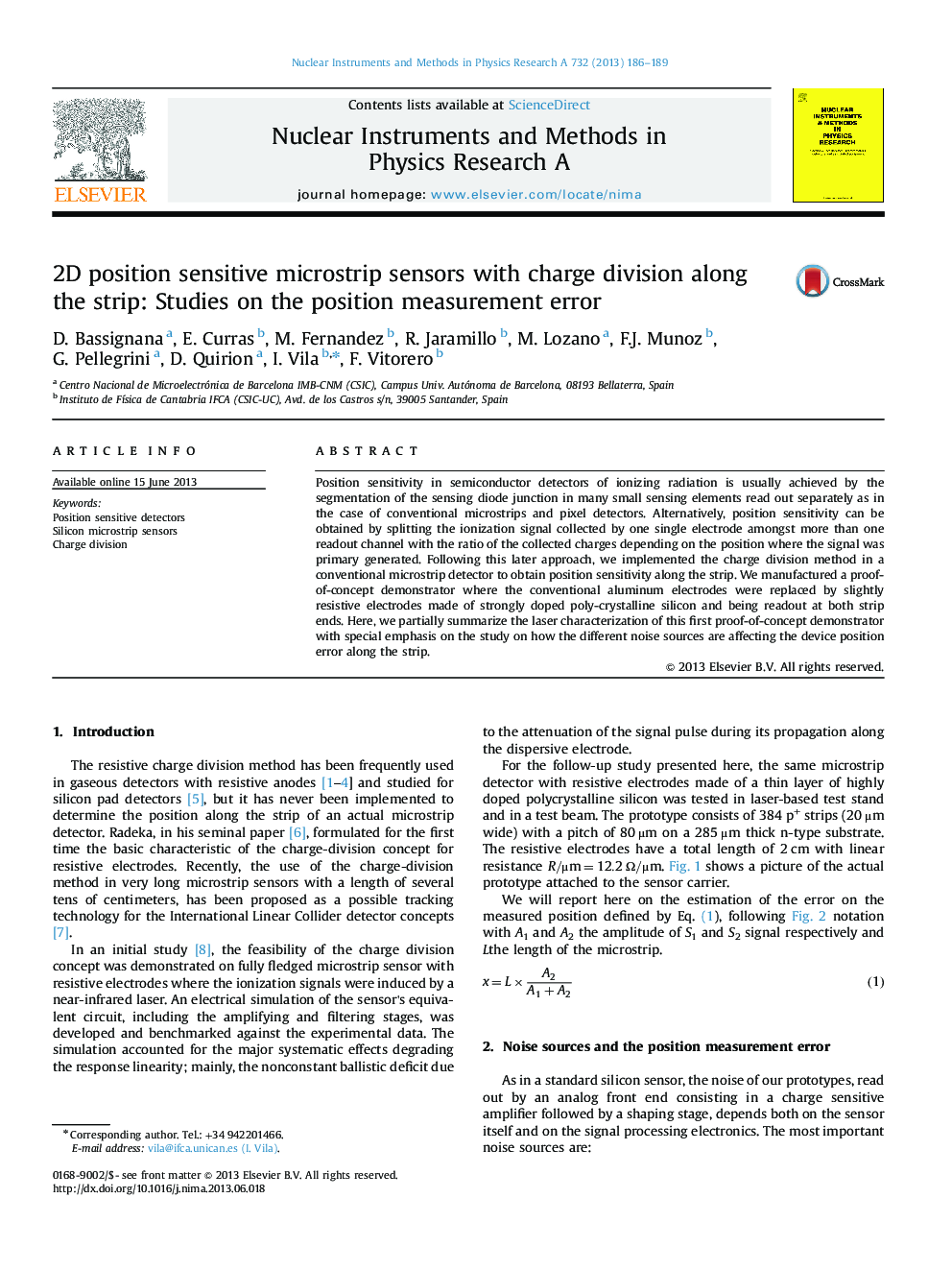| Article ID | Journal | Published Year | Pages | File Type |
|---|---|---|---|---|
| 8178899 | Nuclear Instruments and Methods in Physics Research Section A: Accelerators, Spectrometers, Detectors and Associated Equipment | 2013 | 4 Pages |
Abstract
Position sensitivity in semiconductor detectors of ionizing radiation is usually achieved by the segmentation of the sensing diode junction in many small sensing elements read out separately as in the case of conventional microstrips and pixel detectors. Alternatively, position sensitivity can be obtained by splitting the ionization signal collected by one single electrode amongst more than one readout channel with the ratio of the collected charges depending on the position where the signal was primary generated. Following this later approach, we implemented the charge division method in a conventional microstrip detector to obtain position sensitivity along the strip. We manufactured a proof-of-concept demonstrator where the conventional aluminum electrodes were replaced by slightly resistive electrodes made of strongly doped poly-crystalline silicon and being readout at both strip ends. Here, we partially summarize the laser characterization of this first proof-of-concept demonstrator with special emphasis on the study on how the different noise sources are affecting the device position error along the strip.
Related Topics
Physical Sciences and Engineering
Physics and Astronomy
Instrumentation
Authors
D. Bassignana, E. Curras, M. Fernandez, R. Jaramillo, M. Lozano, F.J. Munoz, G. Pellegrini, D. Quirion, I. Vila, F. Vitorero,
